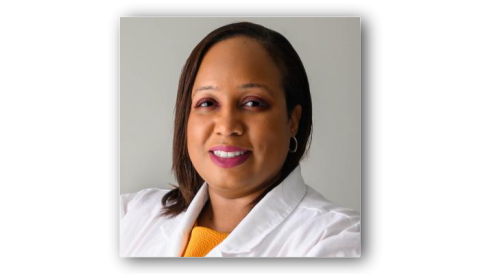Navigating a Positive Patient-Clinician Relationship
November 18, 2024
© 2024 HMP Global. All Rights Reserved.
My name is Dr. Maria Goddard, and I'm a mobile wound care physician in the state of Kansas.
We have to remember that it is a partnership and the patient has more vested interest in what is going on than we do. I know sometimes as clinicians we have that education and that training, but the truth of the matter is that no one knows what's going on with them better than the patient. You see them for a short snippet window of time in what is their entire life, and we don't know what's going on with them physically, psychologically, socioeconomically. And all of that plays into their care, their trust in the system, and how willing they are to do certain treatments, especially in a world that is so quickly evolving.
The other thing is that patients come in to the clinic with an understanding of their disease process. We have to remember that access to information, good or bad, is readily available to patients and their caregivers, and so often people have been looking up their symptoms on the internet, they've been in support groups, they've been talking to people who have been through similar circumstances, and so they're coming into your office, your clinic, your space with an idea of what has been going on.
Also, we tend to treat patients with chronic wounds. We're usually not going to be the first clinician who's going to present them with a treatment option, and so we really want to make sure that we are actively listening and not just dismissing what patients say. And when you have a patient who seems reluctant or when you dig into what has been going on, you find that they're not following through with the care plan as you have discussed it, you might just want to take a step back and go over that plan with the patient again. Maybe they didn't quite understand what was said to them. Maybe you didn't understand what their goals of care were. And so sitting down again and having that conversation, maybe bringing in their caregivers as part of the discussion, if that's something that the patient is comfortable with. Of course you want to make sure that you're following their wishes in that regard as well. They're often patients who are older, who are keeping their children just with enough information to get them to clinic visits, but maybe not telling them the entire story. Sometimes you may need to get the patient alone. Maybe with their loved one sitting there you're not going to get the entire picture because they don't want their loved one to realize how serious that situation is. And so constantly assessing and reevaluating that partnership, it's a relationship. And like we do with all of our relationships, we want to make sure that everyone is being heard and we're taking that into account.
Patients can have great and also low expectations, depending on how long they've been going through the treatment algorithm. And so trying to have a frank discussion about what their overall prognosis is, it isn't possible to close all wounds in every individual. And they may know that before we do. And so talking to them about that, saying we're going to reassess every few weeks, showing them we've got great tools now where you're not just talking about something in an abstract setting. You can pull up maybe wound pictures that you've been taking, you can maybe show them the measurements. Using other tools other than just talking to, again, foster that relationship and make sure that everything is really clearly explained will also help with their expectations as well and how long things will take.
The views and opinions expressed in this content are solely those of the contributor, and do not represent the views of WoundSource, HMP Global, its affiliates, or subsidiary companies.








